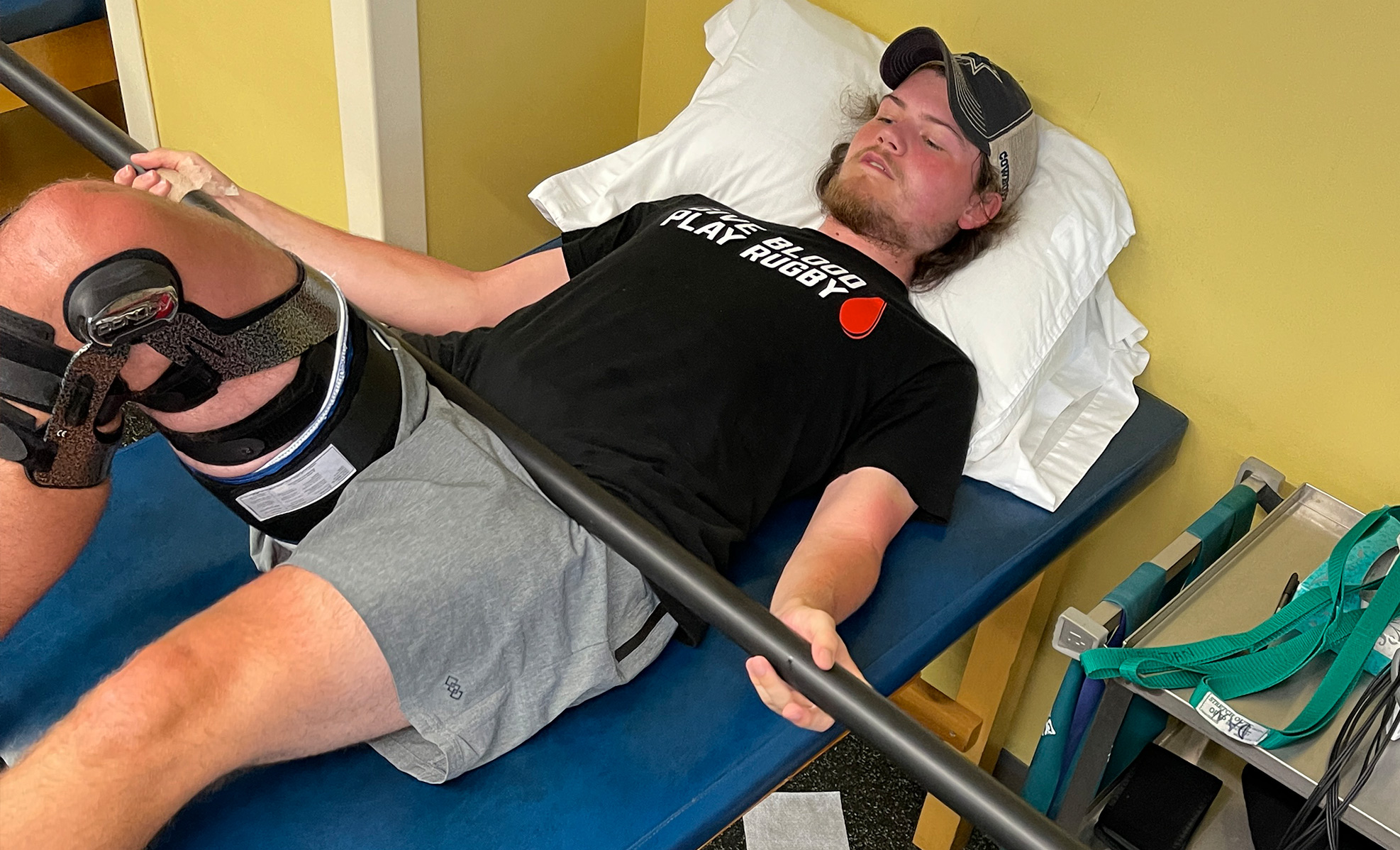Our journey into the world of BFRT began with a resounding recommendation from the military. Many of our men and women in uniform who were injured or recovering from surgery were offered BFRT as part of their healing process with excellent results. In HMG’s rehabilitation practice, we see athletes and other people of all ages before and after surgery recovering from injuries or looking to strengthen specific areas. So, we wanted to learn what it was all about and how we might be able to apply it to our patients.
In 2017, HMG became the first practice in the Kingsport area to offer BFRT to our patients. Since then, we have seen excellent results and expanded our BFRT services to other sites, like our new HMG rehabilitation location in Johnson City, as well as our location in Bristol. Many athletes even brag to their friends about how quickly they’re able to return to sports that they love!
Yet, BFRT only works best when you do it the correct way with trained providers.
What is BFRT?
The basic idea of BFRT is that your muscles get a workout without putting stress on the joint or specific surgery area, which can be beneficial for ongoing muscle training or recouping from an injury or surgery. Because there is less stress, patients can recover and build muscle strength faster.
So, how does it work?
- Your provider puts a cuff (like a blood pressure cuff) above your injured body part.
- The cuff restricts the blood flow to the specific muscle.
- You do your recovery exercises as recommended by your provider. Because the blood flow is restricted, the muscle can be built back up with less stress on the joints and ligaments.
- Your trained provider can adjust the amount of pressure the cuff puts on your body while you exercise. This adjustment by your supervising therapist can lessen side effects such as increased muscle soreness.
Faster Recovery and Strength Training
In our experience, patients who use BFRT recover from injuries faster. We have also seen many athletes and bodybuilders come to us to talk about the benefits of BFRT, even when they’re not injured. Because it’s a low-joint-stress therapy with little to no recovery period, it can also be used during strength training. They can lift less weight per rep and still build muscle. When used as part of exercise, they have seen:
- Increased muscle size and strength
- Better cardiovascular capacity
- Decreased joint/tissue stress
- Reduces muscle damage and post-workout recovery time
- Little to no soreness or delayed onset muscular soreness (DOMS).
There is a catch, however. It’s essential to make sure you see a provider trained in BFRT because, if not done correctly, some people could get:
- Pain around the tourniquet site
- Bruising
- Numbness
- Nerve damage
It is essential to visit providers trained in BFRT so that side effects can be limited or even eliminated. Trying BFRT alone or at a gym is when we’ve seen the most injuries and side effects happen. When done correctly and with a trained health partner, BFRT can be a double blessing because patients can increase muscle strength and get back to the field or life quicker while experiencing less pain.
Who is Right for BFRT?
We have successfully used BFRT to help athletes and bodybuilders with muscle injuries return to sports or the gym quickly. But many people who have had surgery or injuries to their muscles, nerves, bones, or joints — even due to arthritis — may also be perfect for this type of therapy.
Because of how BFRT works, some patients are not candidates for this type of therapy. If you have any risk of clots or a disease like cancer, diabetes, high blood pressure, or an open wound, we can work with our patients to find another therapy. We also don’t recommend BFRT on pregnant women or athletes under 12 years old.
Many providers in the area have referred people to our practice. HMG is a family of care, and providers know that we approach care in a one-on-one setting to create a trusted environment for personalized treatment and healing.
If you think that BFRT might be good for you or want to learn more about it, call HMG’s Rehabilitation at 423-578-1560. We’re here to get you back in the game quickly and safely!










